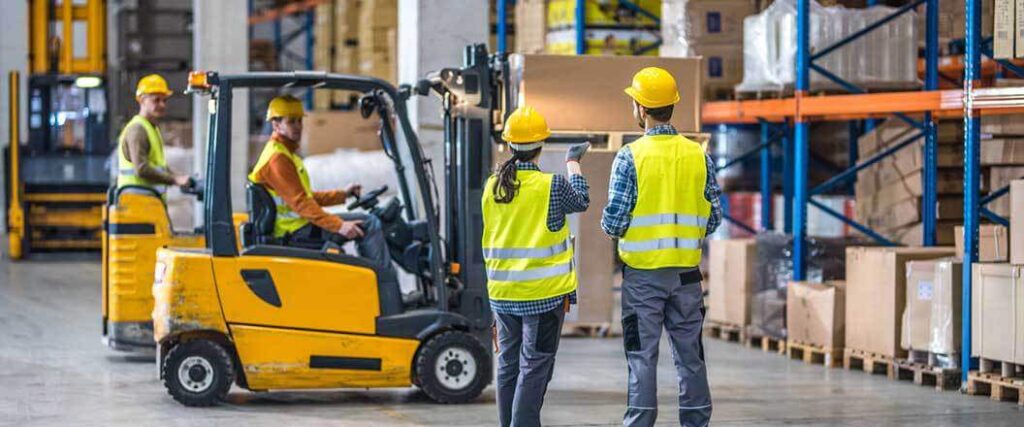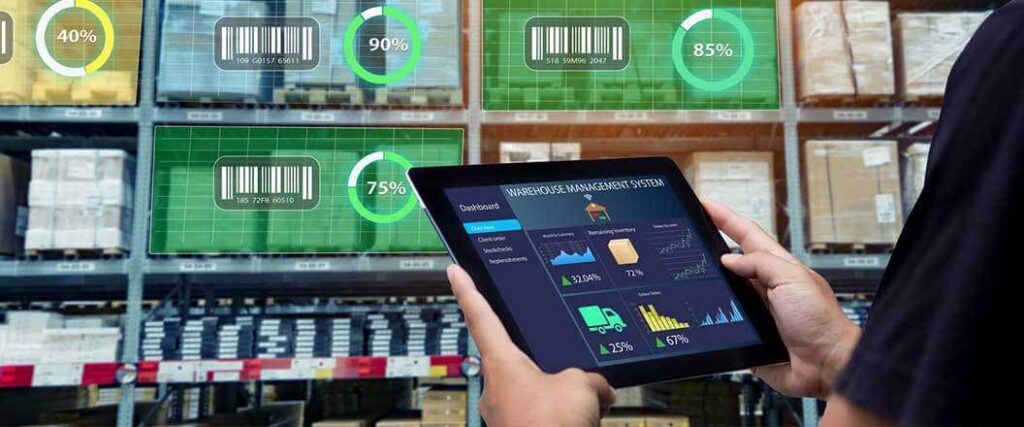
 Copy URL to Clipboard
Copy URL to Clipboard
Fulfillment optimization is a crucial part of any successful retail operation. A subpar system can create all sorts of headaches. From delayed deliveries to incorrect orders, these challenges can cause frustration for both businesses and customers. By improving this area of their operations, companies will be able to overcome an array of issues.
According to the International Warehouse Logistics Association (ILWA), fulfillment optimization is the process of improving the efficiency and accuracy of order processing, from warehouse handling to delivery. It ensures timely and cost-effective distribution, which enhances customer satisfaction and helps scale operations.
We’ll explain how to use fulfillment optimization to improve different areas of your business
Table of Contents
Fulfillment optimization is all about making sure that products get from the warehouse to customers as smoothly and quickly as possible. It also ensures that buyers receive their goods in the right quantity. Fulfillment optimization systems (FOS) work by integrating with different areas inside a company’s distribution center.
This includes:
By integrating with other systems in the distribution center, an FOS is able to obtain data that will reveal optimization opportunities throughout the warehouse. Businesses should know which ares of operations an FOS can combine with and improve
Warehouse management systems (WMS) are at the heart of fulfillment optimization. The software controls everything from inventory levels to order processing.
A good WMS ensures will help with the following:
Essentially, the WMS keeps track of freight within a distribution location and ensures that all operations run smoothly. The data produced by an FOS can determine which areas of a WMS need improvement. Identifying these points help warehouses function more efficiently.
The team at a distribution warehouse plays a key role in fulfillment optimization. Businesses use labor management systems (LMS) to manage their staff effectively. Whether it's scheduling shifts or tracking performance, and LMS makes sure the warehouse has the right amount of workers.
An LMS assigns various tasks to employees. The purpose of the software is to help companies understand how a workforce operates. Leadership can use this information to make the necessary adjustments to help workers perform better.
Enterprise resource planning (ERP) is like the brain of a fulfillment operation. The system provides information about the daily procedures of a warehouse.
This includes:
With ERP, retailers have a clear understanding of the financial aspects of their entire business. An FOS can identify where ERP might be lacking. From there, a business can correct those shortcomings and improve their daily operations.

Retailers don’t often realize how important fulfillment optimization is for a business. It’s very easy for operations inside a distribution center to struggle or fall behind. Companies have to adapt to new challenges to effectively store and ship freight to customers.
Fortunately, order fulfillment optimization can help in the following ways:
With the help of efficient retail fulfillment, companies will improve other areas of their warehouse.
Every retailer knows that time is money. By optimizing order fulfillment, business can get products out the door faster and more effectively. This reduces a few different expenses that companies have to pay.
An efficient retail fulfillment process can lower costs through: :
By optimizing inventory and warehouse layout, businesses can reduce costs related to storage space and maintenance. Efficient picking and packing procedures save both time and labor costs. It also makes it easier to retrieve goods for shipping.
Fulfillment optimization helps business find cheap and efficient shipping options. Choosing the most cost-effective method allows significant cost savings on transportation expenses. Mistakes in order processing can be costly to rectify. With fulfillment optimization, businesses can reduce their number of errors.
Customers can choose between a variety of retailers. Buyers will go where they can get the best service and price. With fulfillment optimization, a company can get a competitive edge over their rivals.
Businesses can achieve this by:
Offering speedy delivery can give companies a significant advantage over competitors. Many customers want their goods to arrive as soon as possible. Shipping items quickly help companies stand out from their rivals.
Retailers that send wrong orders to customers can end up with a bad reputation. A business can gain a competitive edge by sending the right items with every shipment. Allowing customers to send returns can also make a retailer more appealing. This lets buyers send their products back to a company in case there are flawed or broken items in their order.
Retailers have to adjust their fulfillment strategy to the demands of customers. Trends in buyer activity can change for a variety of reasons. Often times, the purchasing behavior of customers changes with the economy and time of year.
Fulfillment optimization helps companies adapt to the change in demand by:
Accurate, real-time inventory tracking enables a quick response to changes in demand. Businesses can use order fulfillment tracking and optimization to determine how much of certain products they should have ready in storage.
Adaptive pricing strategies can be implemented to match customer buying behaviors. As demand decreases, price should as well. This will make products more appealing when customers are spending less.
It’s the goal of all retailers to grow in size. To do so, businesses have to scale upwards as they become larger. Order fulfillment optimization allows retailers to grow the size of their operations in a variety of ways.
These include:
Retailers can improve their fulfillment operations by automating warehouse operations. As businesses grow, they will need to increase their speed. Automation can make shipping and storing much easier and quicker for warehouse workers.
The workforce of a business will also need to expand. Employing flexible staffing solutions can help companies adjust to fluctuating demands. When retailers integrate FOS with labor management systems, they can determine how many workers they need and what areas they should be assigned.
The greatest benefit of fulfillment optimization is customer satisfaction. When buyers are happy, they’re likely to return and purchase more products. Therefore, it’s important for retailers to make the shipping and purchasing experience pleasant for customers.
Efficient retail fulfillment can improve customer satisfaction with the following:
Customers expect their goods to arrive at the estimated delivery date. Fulfillment optimization ensures goods are picked, packed, and shipped shortly after a purchase has been made. Therefore, goods will arrive in a timely manner based on the transportation option picked and when the order was made.
All buyers want to track their orders throughout the shipping process. Many retailers can improve their fulfillment services by using state-of-the-art technology to follow an order after it leaves the warehouse. This allows customers to use real-time tracking information through apps or online portals.
Keeping tabs on shipments is essential. Numerous packages are lost throughout the U.S. for various reasons. We’ve included some data to show how often freight can go missing while in transit.
| State/District | Amount of Lost Packages (searches per 100,000 residents) |
| Washington, D.C. | 669.9 |
| Vermont | 327.5 |
| North Dakota | 294.6 |
| Wyoming | 293.7 |
| Delaware | 289.4 |
Provided by Circuit
Business owners should also consider the financial impact of so many lost packages. Having to ship the same product(s) more than once because of loss during transit curs into profit margins.
Searches refers to the search history of customers who were looking for lost packages. These large numbers of missing show how important it is to use inventory tracking technology. Doing so will help businesses and customers alike keep tabs on freight as it travels through the supply chain. This technology used for tracking can also provide updates regarding the status of orders.
Retailers should remember that every customer wants the goods they’ve ordered to arrive undamaged. Efficient fulfillment operations incorporate quality packaging procedures to meet this expectation. This ensures that goods will arrive at customer’s residence in flawless shape.

It can be hard for retailers to know where to implement order fulfillment improvements. Fortunately, looking over a simple checklist is all that’s needed before enhancing this part of their operations.
Retailers should consider the following:
When reviewing the existing order fulfillment process, businesses will need to identify any potential problems. This can include bottlenecks and other inefficiencies that hold the operation back.
Retailers should review current tools and technologies, including:
After reviewing these systems, retailers can determine if they will need to replace or add onto these programs to optimize their fulfillment. Finally, companies should review the performance of their workers.
It’s the responsibility of businesses to provide training and support if their employees are struggling. Workers will also need to be taught how to work new technology and systems that are introduced. Doing so will optimize fulfillment capabilities for retailers.
Fulfillment and Distribution can optimize your retail operations. We provide an assortment of services that can be used to store and prepare your freight for shipping and storage. Our partner warehouses are also located throughout the U.S. to give you a supreme level of coverage.
Some of the services we provide include:
Don't let your current fulfillment systems stifle your retail business. Connect with Fulfillment and Distribution and take the first step towards a more optimized, customer-centric approach that can transform your retail operations. Start today by filling out your quote request form or call our team at (866) 989-3082 for any questions or concerns you might have.
